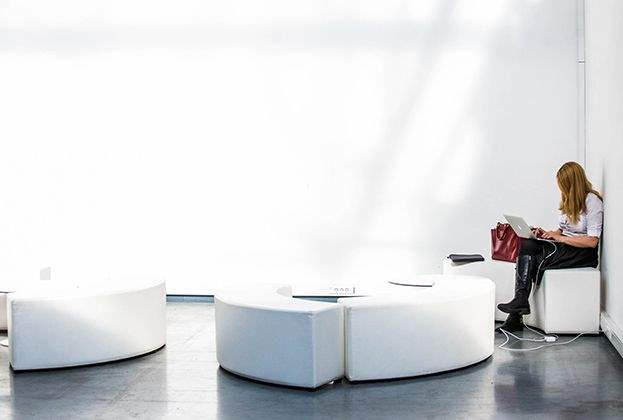Most universities have operational facilities that could be sold and leased back
The debate about whether an organisation should spend its capital on owning its property, or on whatever its core business is, has ebbed and flowed for the last 50 years. For a long time manufacturers such as Ford, or retailers such as Marks & Spencer saw owning their own property as not only insulating them from the vagaries of the real estate cycle, but also as safeguarding the family silver. The 1990s and 2000s saw a swing away from owning to leasing, as many management teams and their advisers argued that a retailer would be better spending its capital on its core business rather than buying property. More recently, there has been much debate in global real estate circles as to whether the new accounting regulations for leases might cause a swing back to owning rather than leasing.
On 1st January 2019 new accounting changes came into force that will result in some fundamental changes to business finances, decision making and financial reports of profitability. For international companies (excluding the US, which operates under a different system), the IFRS (International Reporting Standard) 16, will be the official regulation that replaces the current IAS (International Accounting Standard) 17.
Essentially, under the new IFRS 16, anything that looks or behaves like a lease or that contains an ‘embedded’ lease will be included in the new regulations. The term ‘lease’ in this instance can refer to property, personal property, machinery, vehicles and equipment. For most real estate, the impact will be substantial, with almost all leases being brought onto the balance sheet as an asset and a liability. Leases will be capitalised based on who controls the right to use the asset. In future, some leases may, therefore, become service agreements to avoid them being capitalised, but another entity must have control over the right of use. Serviced offices and collaborative workspace may receive a major boost from the changes, and this is another factor that has been behind the boom in WaaS that we discussed earlier.
$19.5bn of sale and leasebacks took place in 2018
Savills Research
While the simple take-away might be that it now makes more sense to own your property than lease it, the argument remains fairly nuanced. Certainly leases will now appear as an asset and a liability on balance sheets, and very long leases will be heavily disincentivized for a while (also making owning look more attractive). However, we believe that the fundamental question for any real estate user will remain the simple one of whether they can do something more useful with the capital than just investing it in buying their own property.
What is most interesting about this debate is how few businesses appear to have decided to buy their own premises. Indeed, over the last 12 months we have seen a rise in the number of sale-and-leasebacks of headquarters space, such as Goldman Sachs’ £1.2bn sale-and-leaseback of its yet to be occupied HQ to Korea’s National Pension Service.
The clue as to why companies are still choosing to lease rather than own is in the details of the Goldman Sachs deal. What Goldmans were offering was a 25-year lease to a globally strong covenant with an option to break at the 20th year. The fact the final bidders for this very large asset included two pension funds and two private family offices points to another global trend – the hunt for income.
Since the Global Financial Crisis (GFC) the sustained period of low interest rates has meant that traditional ‘safe’ asset classes like cash and sovereign bonds have delivered much lower yields or returns than normal. We estimate that the volume of capital invested into real estate (excluding domestic housing) has risen from $600bn in 2008 to $1.7trn in 2018. This means that 2018 was the most active year ever in the global real estate market, almost 30% higher than the last peak in 2007.
.jpg)
Global investment into real-estate reached $1.7 trillion in 2018
Source: Savills Research, RCA
Low interest rates are not the only reason for the boom in interest in real estate as an asset class. Other drivers include financial liberalisation in some parts of Asia-Pacific, as well as the very rapid growth of some economies in that region. Volatile price movements in resource-producing regions have also played their part, as investors from those countries seek to hedge volatility against stability. However, the key driver of the rise in attractiveness of property as an asset class has been its comparatively strong return compared to other asset classes.
All these factors have combined to make real estate, and most importantly income-producing real estate, an increasingly popular asset class for both institutional and private investors. Indeed, we estimate that 57% of the $1.7trn that was invested into property last year was focused on longer-income assets.
57% of all real-estate investment globally last year was income-producing
Savills Research
Looking ahead, while we do expect interest rates in the UK and elsewhere to 'normalise' over the next decade, the correlation between real estate yields and base rates has become less strong. Investors who look across a multitude of asset classes, and particularly those who are looking for longer-term secure income streams, will reach a point where the yield on sovereign bonds becomes attractive enough again to suggest a re-allocation of some money away from real estate and back into bonds. This will mean that as and when interest rates do start to normalise then the volume of money targeted at global real estate will reduce, and this in turn will reduce downward pressure on the yields on the most ‘dry’ and ‘core’ assets.
However, we do not expect real estate yields to move in lock-step with local rises in base rates as the global appetite for income-producing assets will remain strong.
Implications for higher education
Some universities have already benefited from the swing towards low yielding but secure income that has been prevalent since the GFC. Chiefly this has been through the student housing market where annual global investment activity has risen from $4–$6bn p.a. in 2007–2010 to $14–$18bn p.a. in 2016–2018. Indeed, the UK is by far the largest student housing investment market in Europe, with transactional volumes in line with those of the US (a market with almost 10 times the number of students).
However, given the strong global appetite for secure income streams now might be the time for some universities to think about what other assets they own or plan to build that could be sold and leased back.
We would be the last to suggest that any institution consider selling off the ‘family silver’. However, most universities own a plethora of operational facilities ranging from office space, science parks and innovation centres, to restaurants, shops and warehoused. All these types of property are eminently investible, particularly when the income stream is attached to a long lease on a covenant of the quality of a typical UK university.
The benefits of this approach to the university would include unlocking capital that might be better used on other core aspects of the institutions’s activities, as well as assisting in future proofing the estate.
Read the other articles within this publication below
.jpg)


.jpg)
